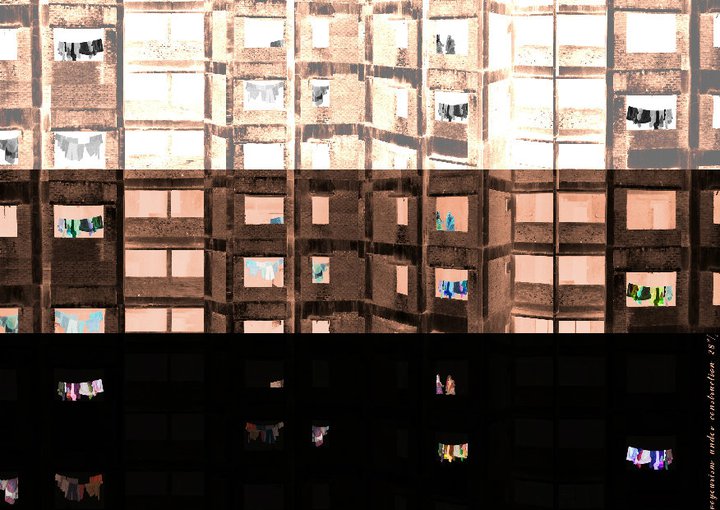urbanism museum voyeurism

Amongst the recent scars in its fabric marking the growth of Ahmedabad is a laceration more than two kilometers long made by the municipal corporation in a road widening process which was being contested by the locals for more than four decades. Many, in their sporadic attempts to reconcile to this ‘development,’ have made amends using immediate and accessible materials and technology, of which few have shown sensitivity; some buildings look queer, and some grotesque, while many lie in wait.
A laboratorial procedure has been laid bare to every one treading the street: cut open buildings, households, and peoples. What is on display is a spectacle of displacements: threads of lives and livelihoods, bearings of both the outsiders and the inhabitants, definitions of the observer and the observed, of references of building and urbanity, notions of scales and thresholds – everything is displaced. The city, it seems, readily offers innumerable sites to incite and rear voyeurism. It is a disrobing of disparate, radical and even unstable relationships of our societies which our built forms more often conceal than willingly represent. Appearing like life-size manifestations of sectional models that form part of architectural studio processes, with a gravely comic juxtaposition of actors along with a paraphernalia of props and sequences, the embankments of the viscous stream present a bizarre drama in which both the spectators’ and occupants’ scampering gazes engage and disengage in their roles.
This split open face of the old city now exhibits decontextualized objects, voids and episodes. As one passes through this bustling and dazed stretch of road between Ellis Bridge and Astodia, a multitude of emotions sieve through: anguish, wonder, rage, humor, enticement, despair and apathy – one feels displaced, disembodied. Here, though a prevalent contemporary condition for various reasons, urbanism is analogous to a museum, particularly so for its very intense degree of decontextualized juxtaposed exhibitionism. And, ironically, behind these very edifices of incoherent animations, another process of museumization is in operation: incompatible urban machinations rendering the tradition fabric inanimate, broken and barren – relics for picture postcards and prevarication or academic allusions and attrition. The city breed voyeurism – promises of immediate consumption at apparent low cost or otherwise.


 malkum
malkum